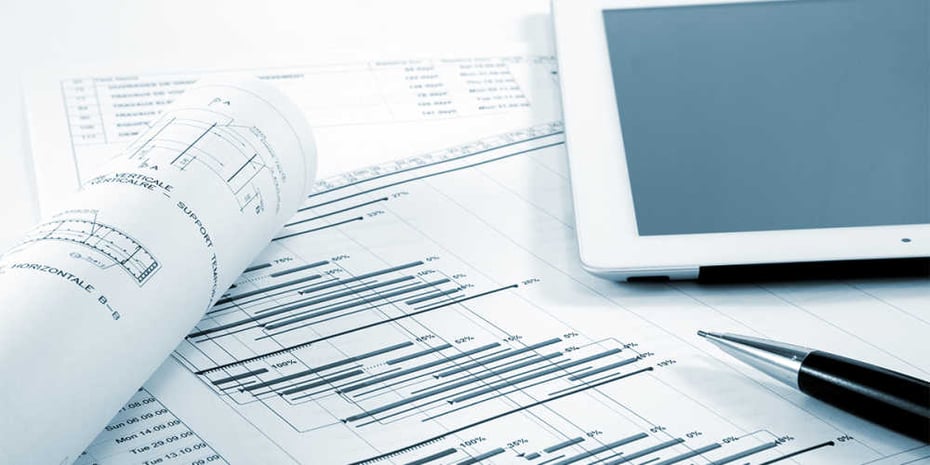Improve Your Workflow: Construction Document Management Made Easy
Improve Your Workflow: Construction Document Management Made Easy
Blog Article
Achieving Seamless Job Distribution: Designer's Comprehensive Technique to Building Paper Administration
One crucial aspect frequently undervalued is the monitoring of building documents, which serves as the backbone of every project. As engineers browse the complexities of implementation, sychronisation, and design, a thorough approach to record management arises as a linchpin for achieving smooth job distribution.
Importance of Building And Construction Paper Management
Reliable construction record management plays an important role in making certain job success by facilitating seamless interaction and company throughout the building and construction procedure. By keeping exact and updated building and construction files, engineers can properly connect with contractors, subcontractors, and various other stakeholders associated with the task. These documents function as a reference point for all parties, guaranteeing that everybody is working from the very same collection of details and decreasing the probability of misunderstandings or errors.
Furthermore, building and construction document monitoring assists architects stay arranged by providing a centralized place for all project-related details, including illustrations, specs, agreements, and communication. When needed, this organization improves the decision-making procedure and permits for fast accessibility to crucial job information. Additionally, appropriate record management can boost job performance, decrease expensive hold-ups, and ultimately lead to the successful conclusion of building projects. Designers who focus on building paper administration set a solid structure for project success and show a commitment to supplying high-grade results.
Key Components for Effective Paperwork

Provided the vital role that accurate and orderly building documents plays in guaranteeing project success, it is necessary to determine vital components that add to effective documents monitoring. First of all, clear and concise communication is critical. All stakeholders should comprehend the documents needs and be able to access and analyze the information easily. Developing standard templates and methods guarantees uniformity across all job papers. This consists of naming conventions, documents frameworks, and alteration control to stop mistakes and complication. Regular evaluations and updates are vital to keep documents existing and reflective of the task's progression. This technique helps determine any type of discrepancies or adjustments that require to be attended to immediately. Applying a robust record management system that enables for variation control, access constraints, and audit routes substantially improves the company and safety and security of job documents. By including these crucial elements right into building paper monitoring techniques, engineers can simplify processes, lower mistakes, and ultimately add to the successful delivery of jobs.
Using Technology for Paper Company
Leveraging innovative digital tools and software application systems contributes in boosting the company and availability of construction documents. Building firms can streamline their record administration processes by carrying out specialized software made for the building industry. These devices use functions such as variation control, cloud storage, and collective modifying abilities, making it possible for employee to deal with papers concurrently and making sure every person has accessibility to one of the most up-to-date details.
One trick benefit of making use of modern technology for document organization is the ability to create a central database for all project-related files. By saving documents in a safe and secure digital atmosphere, architects can quickly look, obtain, and share information with stakeholders, decreasing the threat of variation disputes or misplaced files. Furthermore, progressed software options usually incorporate metadata tagging and indexing capabilities, permitting customers to categorize records successfully and get them swiftly when needed.
Collective Strategies With Project Groups
To optimize job outcomes, engineers have to accept joint strategies when dealing with project groups to make certain seamless communication and sychronisation throughout the building and construction procedure. Collaboration with project groups is vital my sources for designers to effectively handle construction jobs. construction document management. By cultivating open communication and team effort among all stakeholders, engineers can streamline decision-making procedures, address possible issues proactively, and guarantee that everyone is aligned with the task goals
Designers need to develop clear lines of interaction with engineers, contractors, clients, and various other key staff member from the outset of the job. Regular meetings, progression updates, and feedback sessions need to be scheduled to maintain everybody notified and involved. Using collaborative project management devices can additionally help with real-time information sharing and document collaboration, boosting transparency and effectiveness.

Best Practices for File Version Control

Final Thought
In verdict, efficient building record administration is crucial for achieving smooth task distribution (construction document management). It is essential for architects to carry out finest practices in my website record administration to efficiently browse the intricacies of building and construction jobs.
Reliable building file management plays a critical duty in making certain project success by assisting in seamless interaction and organization throughout the building and construction process. Additionally, correct record monitoring can improve job efficiency, lower costly hold-ups, and ultimately lead to the effective completion of building and construction jobs.To maximize task results, designers should embrace collaborative approaches when functioning with project teams to make sure smooth communication and coordination throughout the building process. Partnership with job groups is crucial for architects to properly manage construction tasks.In the world of collaborative building and construction job management, keeping accurate control over record versions stands as an essential method for making certain job stability and communication.
Report this page